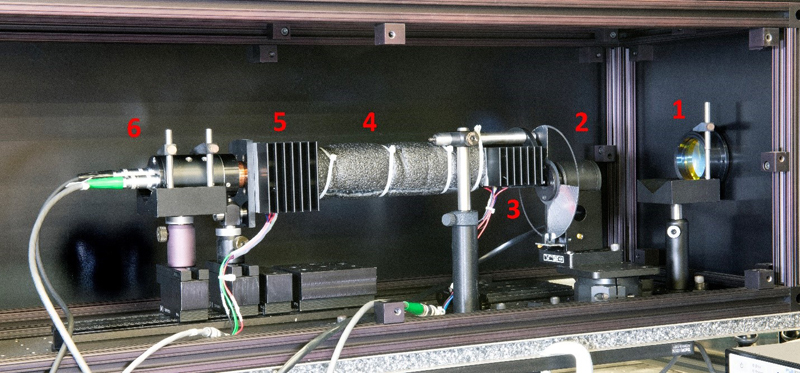| Operation of the NIST Ambient Radiation Thermometer, which is approximately 60 cm (24 in.) long: (1) Infrared (IR) light from a fixed-temperature calibrated source enters the thermometer enclosure through this lens, which focuses the radiation onto a “field stop,” analogous to the f-stop aperture in photography. (2) A circular metal chopper slices the IR beam into a sequence of pulses. (3) The first lens inside the central cylinder converts the light from the field stop to a parallel beam. (4) The light passes through this insulated cylinder about 30 cm (12 in.) long, which is temperature-controlled by a feedback system. Stray radiation is blocked by another stop. (5) A second lens focuses the light onto a pyroelectric detector. (6) The detector output is routed to an amplifier that boosts the signal to readily readable levels. Image: NIST. |
